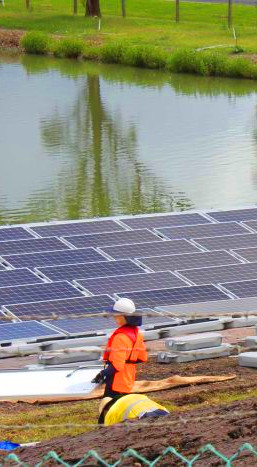Lismore solar sets sail
 Work is beginning on a council-backed floating solar farm.
Work is beginning on a council-backed floating solar farm.
Australia’s first floating farm will take to the water near the northern New South Wales city of Lismore this week.
The solar PV setup will float on the surface of an overflow pond at the East Lismore Sewage Treatment Plant, providing power to the plant.
The 280 floating solar panels will initially produce almost 180,000 kilowatts of electricity each year, using a 100-kilowatt system.
The project has been backed by Lismore City Council, investors, and the community, and is set to account for about 12 per cent of the sewerage plant's energy needs.
Lismore's environmental strategies officer, Sharyn Hunnisett, said it is a sign of the future, with plans to one day generate the whole site’s electricity from renewable sources.
“This plant is one of our highest-use sites so we wanted to find a way to generate renewable energy and we didn't have the land, so we decided on the pond,” she said.
“The cooling properties of water also help the solar panels last longer and perform better, while increased shade over the pond reduces evaporation and algal growth.
“The floating solar farm will save the council a lot of money and it will also help us reach our renewable energy target.”
Project officers say the system is designed to allow height expansion of up to 12 metres, making it capable of surviving huge floods.
Additionally, for safety, a minimum of two workers at any one time will access the panels for cleaning and maintenance using floating walkways.
The floating farm is just one of the measures in Lismore’s Renewable Energy Master Plan, which aims to create systems to self-generate all the council’s electricity from renewable sources by 2023.







 Print
Print